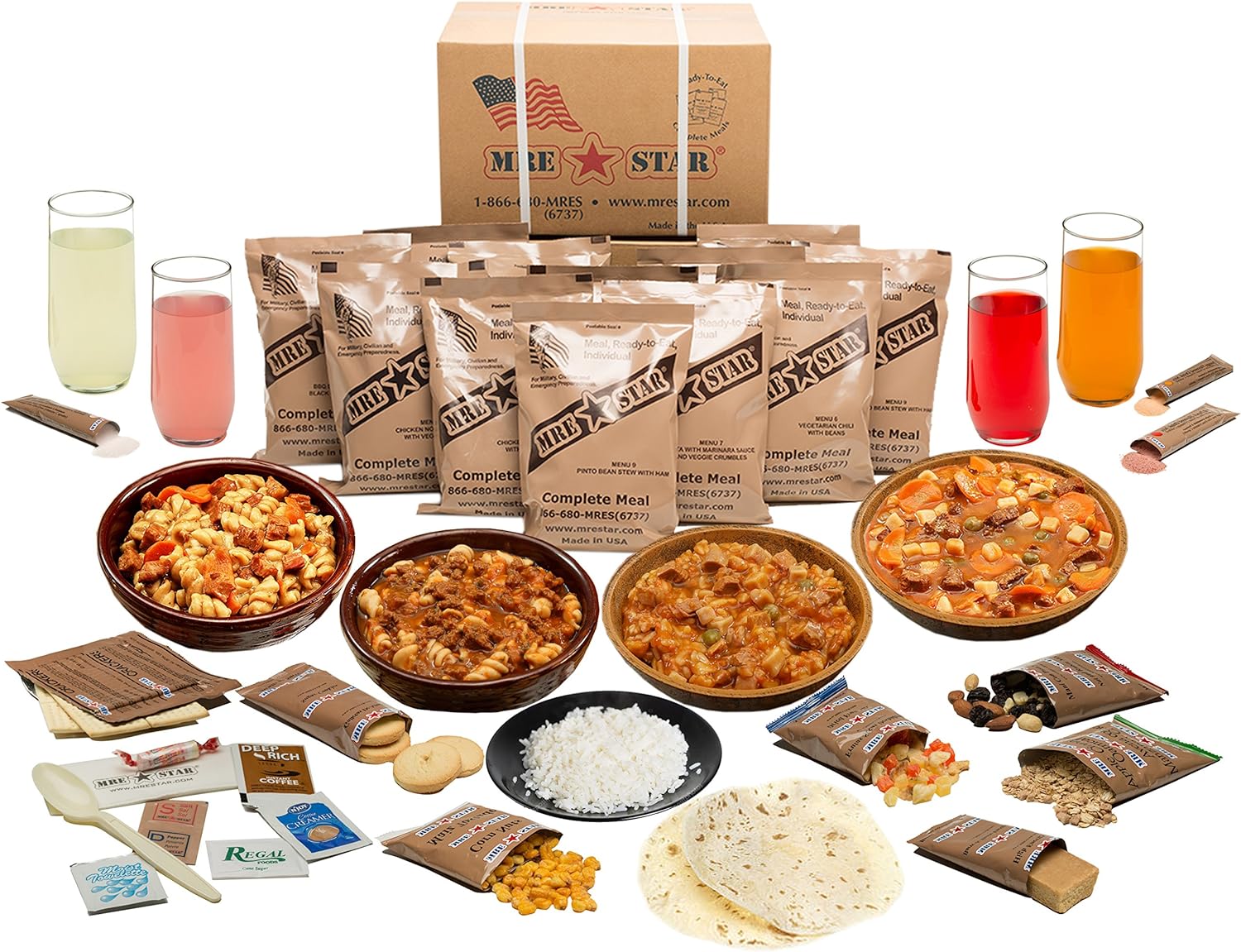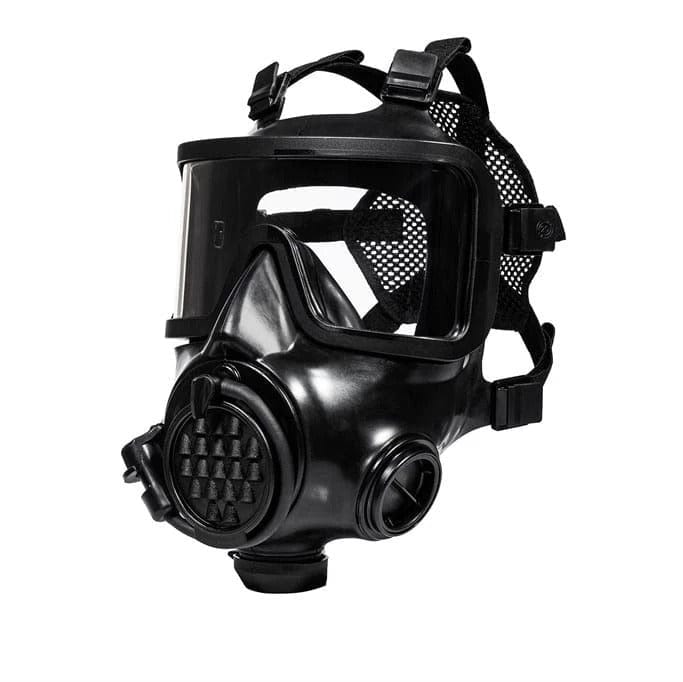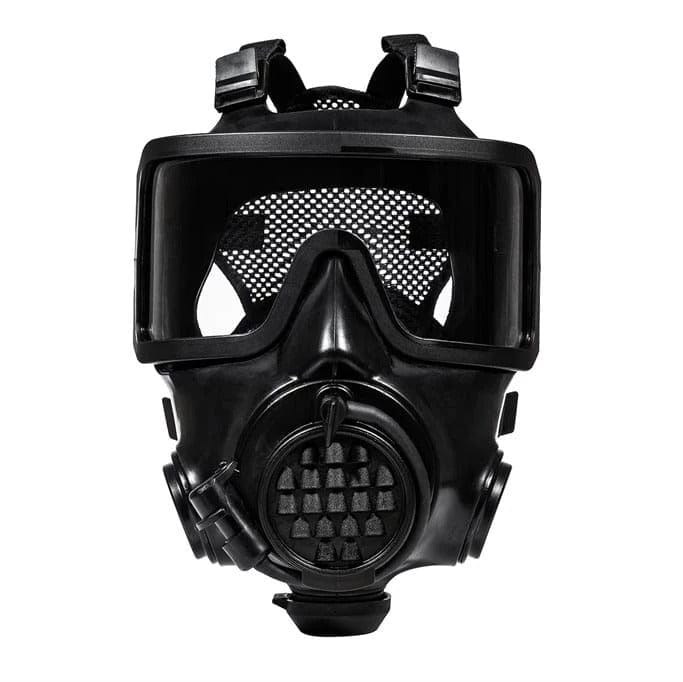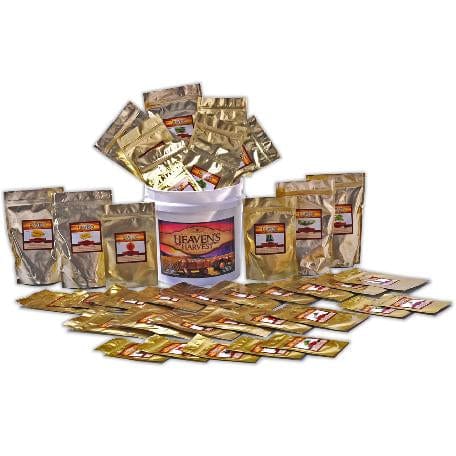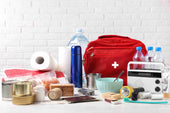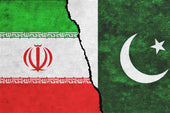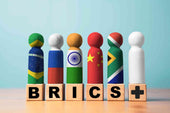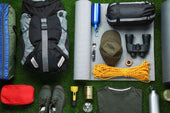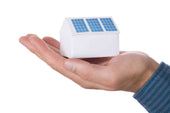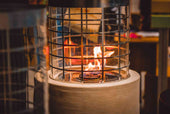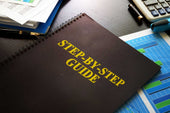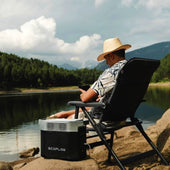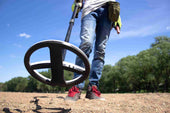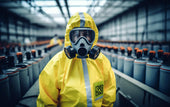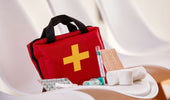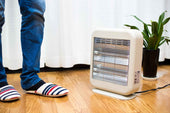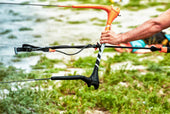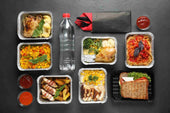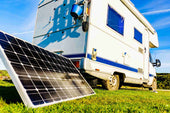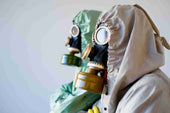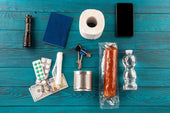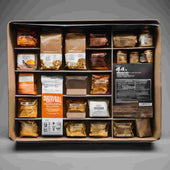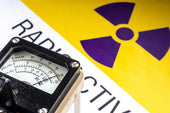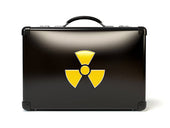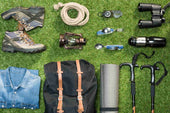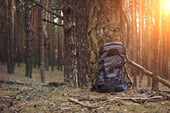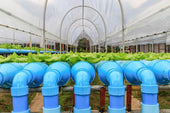Emergency Preparedness Checklist: Only A Moment's Notice

Life is unpredictable, and 2025 is no exception.
From wild weather to sudden power outages, today's world feels more uncertain.
As a family person who deeply cares about my loved ones and community—especially older people—I have learned firsthand how crucial it is to be prepared for anything.
Emergencies do not send out invitations; they often leave no room for second chances when they hit.
Recent hurricanes destroyed entire towns, global pandemics shut down our lives, and now cyberattacks aim to cut off electricity to the power grids.
Such nightmares remind us that being unprepared is no longer an option.
From a brief power outage to a long-term crisis, having a clear, flexible plan makes all the difference between staying safe and being caught off guard.
This article isn't a lecture on doomsday. It's an action guide to keeping yourself and your loved ones safe.
We will step through simple, realistic steps toward preparing for emergencies—things anybody can do regardless of budget or experience.
At the end of this, you will have a complete checklist of food, water, shelter, and other essentials and tips on staying calm and resourceful during hard times.
Preparation isn't about living in fear; it's about emotion. When the unknown comes knocking, you'll feel confident knowing you've taken the necessary steps to face it head-on. Let's get started.
Understanding the Basics of Doomsday Preparedness
Preparing for doomsday has nothing to do with fear but making sure your loved ones are cared for if life throws the unexpected at you.
It has the right tools, knowledge, and mindset to protect oneself and loved ones in the event of natural disasters, a power outage, or crises that cause long-term setbacks.
Think of it as a lifeline when everything seems to fall apart.
At its core, doomsday preparation is about resilience, not paranoia. It's not about ducking into bunkers but about confidence in your ability.
It's out the emergencies with the right core essentials.
A solid emergency preparedness checklist would include a first aid kit, an emergency food supply, proper water storage tanks, and other critical survival tools.
Emergencies do not knock; they often hit with just a moment's notice.
Being prepared ensures you're ready to face any situation, moment's hurricane, wildfire, or extend your per outage.
Begin by evaluating the risks to your region.
Are you more prone to flooding, earthquakes, or cold environments? Do you have the basic skills to cope with these?
Next, emergency supplies customized to these events should be obtained.
Your standard emergency supply kit should include non-perishable food, freeze-dried food storage, canned foods, a hand crank radio, water filters, and emergency tools like duct tape, plastic sheeting, and garbage bags.
Remember to pack personal needs, such as family emergencies, clothing for every household member, hot and cold weather, prescription medication, hand sanitizer, toilet paper, and board games for mental stimulation. If you have pets, stock up on pet food as well.
Mental preparedness is as important as physical supplies.
Staying calm and focused will help you make wise decisions in an emergency.
Critical skills like filtering contaminated air, building shelters, and starting fires will make a huge difference.
Insurance policies, essential documents such as birth certificates, and backup financial security in cash or gold will also be helpful during a crisis.
By preparing for the unexpected, you create a survival kit and ensure your family's ongoing peace of mind.
A proper emergency preparedness checklist will prepare you for anything life throws.
Creating a Doomsday Preparedness Plan

A clear and actionable plan would mean the difference between panic and survival when emergencies hit. A complete doomsday preparations checklist can ensure you and your family are prepared and ready to face any situation. Here's how to build a comprehensive plan.
A. Emergency Communication
It is at these times that one realizes that communication is the key. For example, an emergency communication plan is handy if cell towers are down or the internet is out, and you cannot reach your loved ones or seek help.
-
Start with a Plan: Designate roles for family members and prearrange emergency meetings. Choose a first meeting location near your home and a second one farther away.
-
Use Reliable Tools: To stay connected, you will need an emergency radio, a satellite phone, and a ham radio. A hand-crank radio may also allow you to receive weather updates or other emergency broadcasts.
-
Code Words and Signals: Develop short code words for things such as "safe" or "danger," and instruct your family to use signal mirrors to communicate long distances.
Preparing with communication devices can keep you connected even when "n di "aste" strike."
B. Shelter and Evacuation Plans
Emergencies often require rapid decisions on whether to "bug in" (stay home) or "bug out" (evacuate). Knowing when to do either and having the right supplies can save lives.
Bugging In
-
Secure your home with security cameras, "backup "power, and other "essential" supplies.
-
Stock up on food storage, emergency food supplies, and proper water storage tanks.
-
Ensure you have enough non-perishable, dried food storage and canned foods for at least two weeks.
-
Do not forget items like toilet paper, hand sanitizer, and garbage bags for personal sanitation.
Bugging Out
-
If it isn't safe to stay at home (floods, wildfires, etc.), prepare a bug-out bag for each family member.
-
Pack in core essentials: dehydrated foods, first aid kit, emergency tools, prescriptions, and clothing for a cold environment.
-
You should keep local maps, a water filter, and spare propane in your vehicle. Plan multiple evacuation routes and keep your gas tank at least half full.
-
Sheltering or evacuating safely requires planning, so don't wait until the last minute to prepare.
C. Financial Preparedness
Financial preparedness is often overlooked but is just as important as physical emergency supplies. Disasters cannot affect banking systems, making accessing funds or vital records difficult.
-
Diversify Your Assets: Even small amounts of money, such as bills, benefit barter trade after an emergency.
-
Protect Important Documents: Seal precious things like pieces of jewelry and such with water-and-fire-resistant bags.
-
Budget for Supplies: Invest in the right core essentials, such as a basic emergency supply kit, survival kits, freeze-dried food storage, and a fire extinguisher. Don't forget to budget for pet food, aid supplies, and personal hygiene items. Being financially prepared provides security and peace of mind when navigating emergencies.
Making a doomsday preparedness plan is not merely about collecting emergency tools and survival gear. It's about planning for your entire family's mental health, personal health, and long-term safety.
Combining emergency communication, sheltering strategies, and financial preparation, you can be ready for emergencies immediately.
Stockpiling Essentials
First, the preparations for any kind of emergency require a collection of appropriate supplies.
Your doomsday preparation list must include the necessities: food, water, medical supplies, and tools that will ensure the survival of the entire family.
Let's break down each category and show you how to stock up effectively.
A. Food Supplies
Food has always been on the list as one of the most critical survival factors. Short- and long-term food supply means your family remains fed, at least for an extended period, before it subsides.
Short-Term Food Storage
Begin with non-perishable products that require minimum preparation.
Amass canned, freeze-dried, and ready-to-eat foods, such as protein bars and MRE (Meals Ready-to-Eat), are highly convenient, easy to consume, and can be kept on the shelf for much longer.
Prepare accordingly and calculate the average caloric needs of each person in your house. The average adult consumes about 2,000 calories daily, while children and seniors require less.
Provide the selection of food to maintain energy and nutrition. Do not forget the pet food for the fur babies!
Long-Term Food Storage
For long-term emergencies, concentrate on bulk grains, beans, and other long-shelf-life items.
Investing in freeze-dried food storage and learning preservation techniques, such as putting goods into Mylar bags with oxygen absorbers or vacuum-sealing dehydrated foods, would help.
Preserve fruits, vegetables, and meats through home canning.
Creating a sustainable food stockpile doesn't occur overnight. You'll slowly build your stock, create a steady reserve, and at the same time rotate your stock so it won't go to waste.
B. Water and Hydration
In any survival scenario, water is more crucial than food.
Generally, a minimum of 1 gallon of water should be stored for each person in a household, with enough water for drinking and other minimal hygiene purposes.
Water Storage
For short-term water emergency crises, store it in food-grade, durable containers.
Proper water storage tanks are necessary for large families. They should hold enough water to last at least two weeks, and the water stored in them should be rotated every six months to maintain their freshness.
Water Filtration and Purification
Storable water may not last forever.
If you run out of long-term needs, invest in water filtration tools, such as Lifestraw, Berkey filters, or iodine tablets, to filter contaminated water.
This allows you to safely drink from natural sources such as rivers and lakes.
Natural Water Sources
If you live near a river, stream, or lake, identify these locations as backup water sources. Learn critical skills for purifying water, such as boiling, using bleach, or advanced filtration systems.
C. Medical Supplies and First Aid
Injuries and illnesses don't wait for convenient times. Having an aid kit and comprehensive medical supplies on hand is crucial.
First Aid Kit Essentials
Every home must have at least one well-stocked first aid kit. This kit should include bandages, gauze, antiseptic wipes, adhesive tape, scissors, and pain relievers. Bandages are also a must-have for your emergency kit or bug-out bag.
Prescription Medications and Over-the-Counter Supplies
Prepare adequate prescription medications for your family members. Over-the-counter preparations may include antihistamines, anti-diarrheal tablets, fever reducers, and cold medicines.
Advanced Medical Tools
Prepare additional supplies for serious emergencies, such as splints, sutures, thermometers, and blood pressure monitors. Taking a first aid or CPR course to develop essential skills in rendering medical aid is also a good idea.
D. Energy and Power
Loss of power is one of the biggest issues during a natural disaster or emergency. Planning your energy needs will ensure your family stays safe and warm.
Backup Source of Power
Buy generators, solar unit systems, and power banks to continue using some essential appliances in case of loss of power. Long-term investment in renewable energy would be the solar panel.
Lighting Options
Keep LED lanterns, headlamps, flashlights, and candles in your stockpile. These items are essential for safely navigating dark spaces, especially in a cold environment.
Fuel Storage
Store spare propane, gasoline, and firewood. Follow safety guidelines when storing and handling flammable materials.
E. Tools and Equipment
The right tools will make it much easier to navigate through an emergency.
Multi-Purpose Tools
Invest in Swiss Army knives, multi-tools, and duct tape. These are useful for making repairs, building shelters, or even basic survival needs.
Building Supplies
Include tarps, nails, hammers, and other tools in your home bag. These can be used to repair your home or build temporary shelters.
Navigation Gear
If you must evacuate or find alternative routes, keep printed local maps, compasses, and GPS devices on hand.
F. Hygiene and Sanitation
Maintaining hygiene during a crisis is essential for personal health and mental health.
Toiletries and Personal Hygiene Items
Stock up on soap, toothpaste, hand sanitizer, and toilet paper. These are often forgotten items but crucial for comfort and hygiene.
Waste Management
Always ensure provision for waste removal using garbage bags and a temporary restroom by investing in an easily portable toilet or sanitation package. These should aid in the controlled disposal of unused waste from installed systems.
Special Care Requirements
All women's supplies hygiene. Baby care for Elderly families can make unbearable and difficult situations very well bearable.
G. Self-Defense and Security
Because humans can sometimes be cruel during emergencies, it is important to anticipate how to ensure your safety through self-defense within your home.
Non-Lethal Defense
Items such as pepper spray, stun guns, and whistles can be used for self-defense without lethal force.
Firearms and Training
If you are willing to own guns, you must be trained appropriately and follow all local laws. This is not feasible for everyone, but it is true in some situations.
Home Security
Reinforce your doors, get security cameras and alarms, and you'll dare even the intruders. These keep them away.
The basic thing that you will need in your emergency preparedness checklists is stockpiling. This does not prepare you for natural disasters alone but prepares your family to confidently handle whatever challenge. The right emergency supply means you are prepared for whatever comes your way.
Building Mental and Physical Resilience

It is not merely about amassing supplies but also about gearing the mind and body to face challenges. A good doomsday preparation checklist must include mental and physical resilience.
Mental Preparedness
Half the battle when emergencies strike is keeping you cool. Amidst the chaos, your clear-headed thinking and quick action may make all the difference for you and your whole family.
Begin by practicing mindfulness every day. Easy breathing exercises will help you cope with stress during an emergency, such as a disaster or a power outage. Focus on what you can control, such as grabbing your bug-out bag, securing your emergency radio, or leading your family to safety.
Develop situational awareness.
Be aware of your surroundings, whether at home or out and about. Practice paying attention to the exit, possible dangers, and available resources, such as nearby water storage or shelter.
This may give you better choices, even though you only have a moment.
Maintaining one's mental health is also part of normalcy.
Board games or shared meals can keep children's spirits high during extended crises.
Staying positive and focused helps maintain morale, even when resources such as emergency food supplies or first aid kits are being rationed.
Physical Fitness
Survival sometimes calls for physical toil, lifting heavy cargo shipments of assistance, or walking through miles and miles with a homeowner's duffel.
That strength and stamina developed today will mean survival and death-wholesale tomorrow.
Begin with basic exercises such as walking, jogging, or swimming.
Strength training, such as push-ups and lifting weights, will enable you to perform physical activities like moving freeze-dried food storage and setting up proper water storage tanks.
Flexibility, such as yoga and stretching, prevents injuries during critical stress activities.
It includes your physical health.
A fit body will let you carry survival kits, filter water, and face the conditions, thus maintaining personal health and conserving body heat.
With mental and physical preparedness, you're preparing to survive and lead.
Emergencies are unpredictable, but with the right mindset and physical fitness, you can overcome them confidently and with strength.
Conclusion: Critical Skills in Emergency Situations

Preparedness is not about fear but about empowerment.
As we enter the challenges of 2025 and beyond- from natural disasters to unexpected emergencies- the most responsible act you can take is to start taking steps to secure yourself and your family members.
A doomsday preparation checklist, from a basic emergency supply kit, freeze-dried food storage, or emergency tools, will prepare you for whatever life has in store.
It doesn't happen overnight. Get started little by little.
You might start with an emergency kit that includes non-perishable food, a source of pure drinking water, basic medical supplies, and personal hygiene items.
Then, gradually, you add more core essentials, including a bug-out bag, communications tools, first aid kits, and the rest.
Every step will bring you closer to readiness for anything life may throw at you.
Above all, do not forget mental and physical preparedness.
Strengthen your body, sharpen your mind, and strengthen resilience throughout your family. Use simple boards or familiar practices to keep morale high during unknown times.
Prepare for the worst. Hope for the best. Stick to it in the right direction, preparing for emergencies of strength, hope, and better days.


